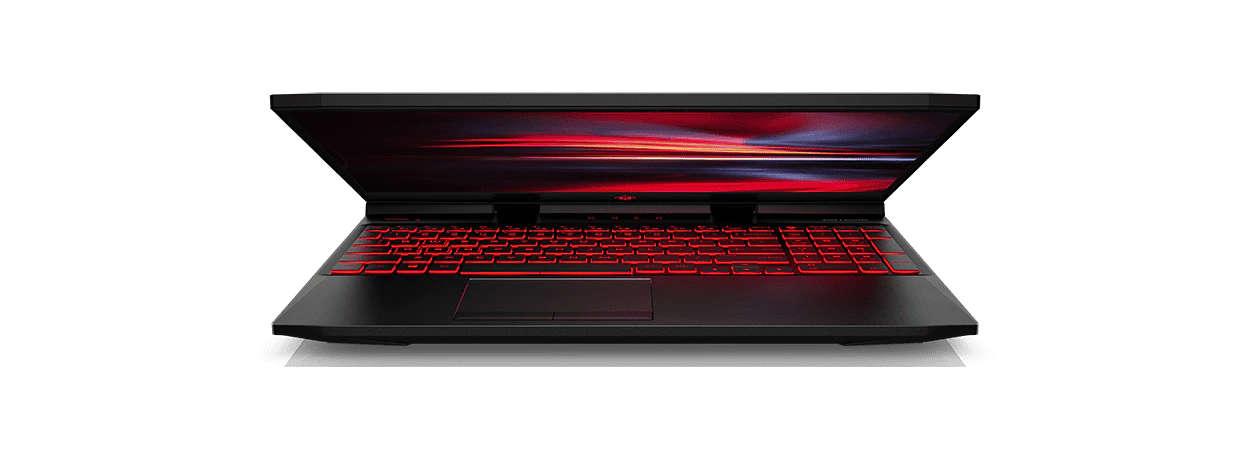Thank you for visiting the HONG KONG HP Store
-
Contact Us
CONTACT USChat with us
- Sales
- 85264507529(WhatsApp)
-

- Post Sales
- 85230016720(WhatsApp)
Mon-Fri 8.30am - 5.30pm
(exc. Public Holidays)
Live product demo
Store finder Locate our stores - Location
- My Account
How to Daisy-Chain Monitors


If you use your computer as a business or creative workstation, then you’d probably benefit from having a 2, 3, or even 4-monitor setup at your desk. But it’s not always easy to set up multiple monitors, especially if you have a tight workspace. Your computer might not have enough video ports for all your monitors, and even if it does you might be left with all sorts of tangled cables cluttering your desk.
If you’re going for a multi-monitor setup, you should consider daisy-chaining your displays. Let’s review what daisy-chaining is, and how you can do it.
What does it mean to daisy-chain monitors
Daisy-chaining is when you connect a series of devices together using only a single connection between each device.
Let’s say you wanted to connect 2 additional monitors to your desktop computer. You would have to plug all three monitors into video ports on your computer - and your computer might not have enough video ports to go around. You could use a port adapter, but that wouldn’t alleviate all the cables strewn across your desktop.
Daisy-chaining is a great way to simplify your desktop configuration. Here’s how it looks if you daisy-chain 3 monitors:
- Monitor 1 and Monitor 2 are linked by a short video cable
- Monitor 2 and Monitor 3 are linked by a short video cable
- Only 1 monitor plugs into your computer
This is a much easier and more space-efficient setup than if you had to plug all 3 monitors into your computer. The cables that link each display could be short and kept tucked away behind the monitors.
Benefits of daisy-chaining

The main advantage of daisy-chaining is that you don’t need to have as many cables plugged into your computer, so it’s easier to maintain a clean and spacious workspace. There are lots of people who concentrate better when they have a clean workspace, and if that’s you, then you might be able to get a productivity boost by daisy-chaining.
But a multi-monitor setup will boost your productivity on its own. Having 2 or more monitors makes it much easier to multi-task because you can reference one display while you type on another. It’s great if you’re:
- Conducting research
- Entering data
- Video conferencing
- Working on expansive creative applications
Daisy-chaining isn’t limited to displays, either. If you were to daisy-chain devices using Thunderbolt plugs, you’d also be able to link external hard drives and other devices on the same chain. That makes daisy-chaining especially advantageous to the creative professional. Creative professionals can use daisy-chaining to easily link multiple displays and RAID-optimized hard drives onto a single simple configuration.
Daisy-chain monitors

As of 2019, you can only daisy-chain monitors that are equipped with DisplayPort v1.2 or Thunderbolt. You can’t daisy-chain via HDMI, USB-C, or VGA.
If you’re going to daisy-chain monitors via DisplayPort, you’ll need monitors that are equipped with both a DisplayPort In and DisplayPort Out port. Most monitors may only come with a single DisplayPort In port, but you will also need a DisplayPort Out for the “middle of the chain” monitors. The last monitor on the chain only needs a single DisplayPort In.
In addition, your GPU must support DisplayPort 1.2 MST. MST stands for “multi-stream transport,” and it’s the software that enables daisy-chaining between DisplayPort ports. If your GPU doesn’t currently support MST, you should be able to download an MST driver online. The driver will then enable daisy-chaining on your GPU.
Note: On some monitors, you may be able to use USB-C in place of DisplayPort In. We’ll discuss this later.
How many monitors can I daisy-chain?
The number of monitors that you’re able to daisy-chain depends on your GPU. Many GPUs can handle 3 daisy-chained monitors. Other GPUs are capable of handling up to 6.
Keep in mind that there’s a limited amount of pixel data that can be transferred through the DisplayPort bus. If you’re going to chain more than 2 monitors, you probably won’t be able to run each monitor at their maximum resolutions.
With each display you connect, you’ll have to lower the resolutions. You don’t need to lower the resolution on each monitor - you could, for example, run your first monitor on a high resolution, your second monitor on a medium resolution, and your third monitor on a low resolution. Just be sure that you configure your highest-resolution monitor to be the one you use for video streaming or for doing visual work.
If you only have 2 daisy-chained monitors, you should be able to run each at a relatively high resolution.
How to DisplayPort daisy-chain
Here’s how to set up a daisy-chain using DisplayPort.
- Verify that your GPU can support DisplayPort v1.2 MST (if not, download a driver)
- Plug each of your monitors into a power source and make sure all power cables are securely connected
- Use a DisplayPort cable to connect your computer to DisplayPort In on Monitor 1
- Use a DisplayPort cable to connect DisplayPort Out on Monitor 1 to DisplayPort In on Monitor 2
- To daisy-chain additional monitors, follow a similar sequence: use a DisplayPort cable to connect DisplayPort Out on Monitor 2 to DisplayPort In on Monitor 3 and so forth
Adjust your display settings
Windows 10 might not immediately recognize your daisy-chained monitors. Or, it might recognize your displays in an erroneous configuration - for example, it might think that a display placed on your left is a display placed on your right.
You can easily adjust your display settings in Windows 10. Follow this step by step guide to learn how to configure them.
How to Thunderbolt daisy-chain

Here’s how to set up a daisy-chain using Thunderbolt. It’s not very different from the procedure to DisplayPort daisy-chain.
- Verify that your GPU can support MST (if not, download a driver)
- Plug each of your monitors into a power source and make sure all power cables are securely connected
- Use a Thunderbolt cable to connect your computer to Monitor 1
- Use a Thunderbolt cable to connect Monitor 1 to Monitor 2
- Add additional monitors in the same fashion - Thunderbolt typically enables you to daisy-chain 6 or 7 independent monitors
You can also run a Thunderbolt daisy-chain by using a Thunderbolt dock. Just plug each monitor into the Thunderbolt dock via Thunderbolt cables. Then, connect your Thunderbolt dock to your computer. Your computer should recognize each of the displays.
The dock method isn’t quite as space-efficient as the traditional method because somewhere on your desktop you’ll have a swarm of cables plugging into your dock. But it’s still advantageous because you’ll easily be able to connect several monitors to your computer via a single Thunderbolt connection. And Thunderbolt is a super-fast bus that can quickly transfer a huge amount of data, so it might be a better option for you if you’re working with intensive software on more than one monitor.
Best monitors for daisy-chaining
Remember that to enable daisy-chaining, you need to have:
- A capable GPU that can handle simultaneous processing for multiple displays
- Monitors that have both video input and video output ports
Here are two of the best HP computers and monitors for daisy-chaining.
1. HP EliteDisplay E243d 23.8-inch docking monitor

The HP EliteDisplay E243d docking monitor is set to be released later this year (2019), and for a monitor with so many amazing features, it’s going to be offered at a stunningly affordable price.
This is the first HP display that’s ready-made for daisy-chaining. It’s equipped with a DisplayPort In port, and it also features a USB-C port with Alt Mode. Alt Mode is a USB-C feature that’s able to send data in other video port formats, so you can use it here in place of the traditional DisplayPort In [1].
You’ll love this monitor if you run large software that’s demanding on your processors. It’s equipped with USB-C, which is a fast bus that can transfer a large amount of data, and you’ll be able to plug USB-C into a Thunderbolt dock if you choose to daisy-chain in that way.
There are a couple of other great features, too. First, the display has micro edges so you can place it side by side with another micro-edge monitor and enjoy a seamless interface from one to the other. Second, if you’re connecting this display to a laptop, you’ll actually be able to charge your laptop through the USB-C connection - so long as your laptop is plugged into the monitor, you won’t also have to connect it to an outlet.
2. HP Z displays

If you want to daisy-chain monitors through a Thunderbolt dock, you should look into these HP Z displays. HP Z displays are made to complement the HP ZBook workstations, which means they’re built to provide a gorgeous and color-accurate visual presentation with a fast refresh rate.
Many of these displays are built with both Alt Mode USB-C ports and DisplayPorts so you can also run daisy-chains using the DisplayPort method. And, as mentioned, USB-C ports yield high transfer speeds that are great when you’re working on intensive applications.
If you’re only using one monitor, try a multi-monitor setup and see why so many multi-monitor users have never turned back. And if you already have a multi-monitor setup, give daisy-chaining a shot and see how much cleaner it’ll make your workspace.
Reference
[1] Blog.StarTech.com; Tech Talk: Using USB-C and DisplayPort over Alt Mode
- Sales
- 85264507529(WhatsApp)
-

- Post Sales
- 85230016720(WhatsApp)
Mon-Fri 8.30am - 5.30pm
(exc. Public Holidays)
Live product demo








